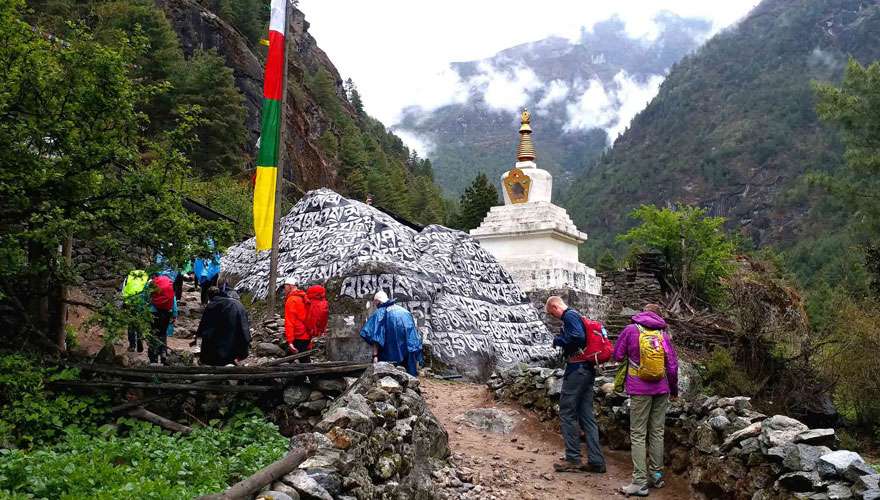Trekking in Everest Region

The best time to trek to Everest Base Camp (EBC) is during the pre-monsoon (spring) and post-monsoon (autumn) seasons. These periods offer the most favorable weather conditions and the best overall experience.
Best Seasons for Everest Trek
Spring (March to May)
- Weather: Spring provides mild and stable weather, making it an excellent time for trekking. The temperatures are moderate, and the skies are usually clear, especially in the mornings.
- Temperature: Daytime temperatures at lower elevations range from 10°C to 20°C (50°F to 68°F), while temperatures at higher elevations can be cooler, often dropping below freezing at night.
- Flora and Fauna: The spring season is known for its blooming rhododendrons and other alpine flowers, adding vibrant colors to the trail.
- Visibility: Clear views of the mountains are common, particularly in the early morning hours.
- Crowds: This is one of the peak trekking seasons, so the trails and teahouses can be busy, but the atmosphere is lively and bustling.
Autumn (September to November)
- Weather: Autumn is considered the best time for trekking due to its stable and dry weather. The skies are usually clear, providing stunning and uninterrupted mountain views.
- Temperature: Daytime temperatures are similar to spring, ranging from 10°C to 20°C (50°F to 68°F) at lower elevations, with colder temperatures at higher altitudes.
- Visibility: This season offers the clearest and most consistent views of the mountains, making it ideal for photography.
- Crowds: Autumn is the most popular trekking season, so expect busy trails and fully booked teahouses. The vibrant atmosphere and the opportunity to meet trekkers from around the world can be a highlight.
Other Seasons
Winter (December to February)
- Weather: Winter trekking is possible but challenging due to cold temperatures and snow, particularly at higher elevations. The days are shorter, and nighttime temperatures can be extremely cold.
- Temperature: Daytime temperatures can be very cold, especially above 3,000 meters (9,843 feet), with nighttime temperatures dropping well below freezing.
- Visibility: Clear skies are common, offering excellent mountain views, but the cold can be intense.
- Crowds: Fewer trekkers on the trails, providing a more solitary and peaceful experience.
Monsoon (June to August)
- Weather: The monsoon season brings heavy rainfall, making trails muddy and slippery. There is also a higher risk of landslides and flight delays to Lukla.
- Temperature: Warm and humid at lower elevations.
- Visibility: Clouds and rain can obscure mountain views.
- Crowds: Very few trekkers during this season due to the challenging conditions.
Best Time Recommendation
For the best overall experience on the Everest Base Camp trek, aim to trek during the autumn (September to November) or spring (March to May). These seasons offer the most stable weather, clear mountain views, and comfortable temperatures for trekking. Autumn is particularly favored for its consistent clear skies and visibility, while spring offers the added beauty of blooming flora.
Choosing between spring and autumn depends on your preferences for flora, temperatures, and crowd levels:
- Spring (March to May): Ideal if you enjoy seeing blooming flowers and a slightly warmer climate.
- Autumn (September to November): Best for consistent clear skies and cooler, crisp air.
Related Blog

-1719587878.jpg)